Today I want to compare standard hard plastic rotomolded fishing kayaks to inflatable fishing kayaks. For this comparison, I set up to do a Coosa X vs NRS Pike Pro and Kuda 126 consolidated review.
I've already reviewed these boats on my Road Trip Angler YouTube channel. However, this article isn't really about comparing these models specifically. Instead, I want to talk about the general pros and cons of the standard hard plastic versus inflatable fishing kayaks, and where I see each type of kayak making the most sense.
Kayak Weight Can Vary Significantly
Weight will be a determining factor if you’re considering one of these two types of fishing kayaks. There are some relatively lightweight composite kayaks out there, but inflatables are generally much lighter. However, hard-shell rotomolded fishing kayaks are usually wider, more stable, and can carry a lot more gear.
Inflatables usually weigh between 30 and 50 pounds. Hard plastic kayaks generally weigh from 70 pounds to 150 pounds or more for pedal drive kayaks.
Since weight can vary so much, it's worth thinking about when you're comparing the two types of kayaks.
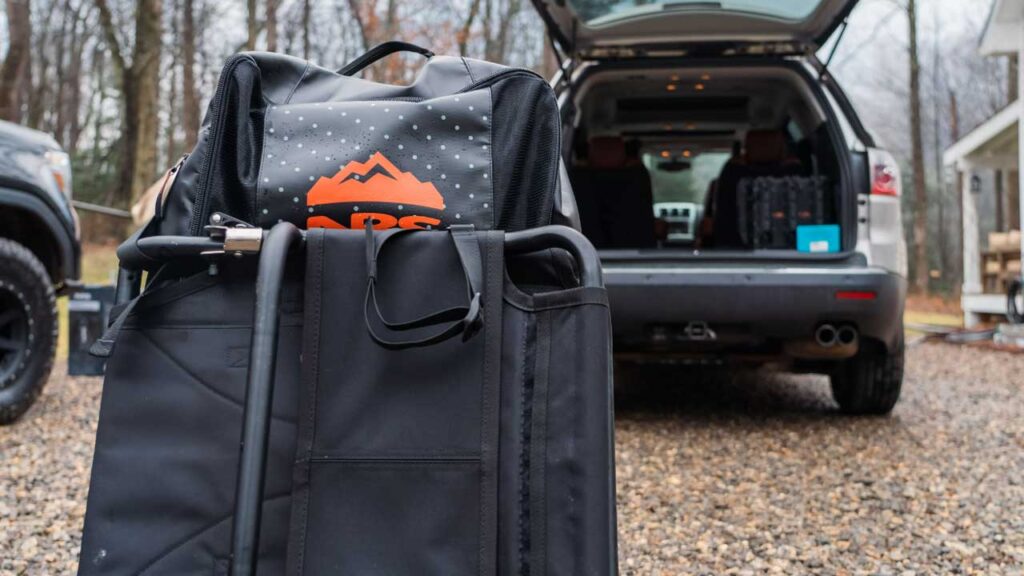
Transportation and Storage
You’ll also want to factor in storage and transportation when you’re comparing inflatable and hard-shell fishing kayaks.
Regardless of design, most fishing kayaks are between 11 and 14 or 15 feet long. You can transport a hard kayak on a roof rack, but I'd say that inflatables have the edge when it comes to transportation. It's just nice being able to pack them down, put them in a case, and throw them in the back seat or trunk of a car.
Plus, you can store them in a closet. This just isn't an option with hard-shell rotomolded kayaks. In fact, you need a space bigger than the kayak itself. This usually means a pick-up truck or trailer for storage, and a garage, a shed, or a basement with an outdoor entrance for storage.
Materials and Construction
Materials and construction are two more things to think about when it comes to hard-shell versus inflatable fishing kayaks. The NRS Kuda and Pike Pro inflatable fishing kayaks are made from PVC-type vinyl material, whereas the Coosa X is rotomolded plastic.
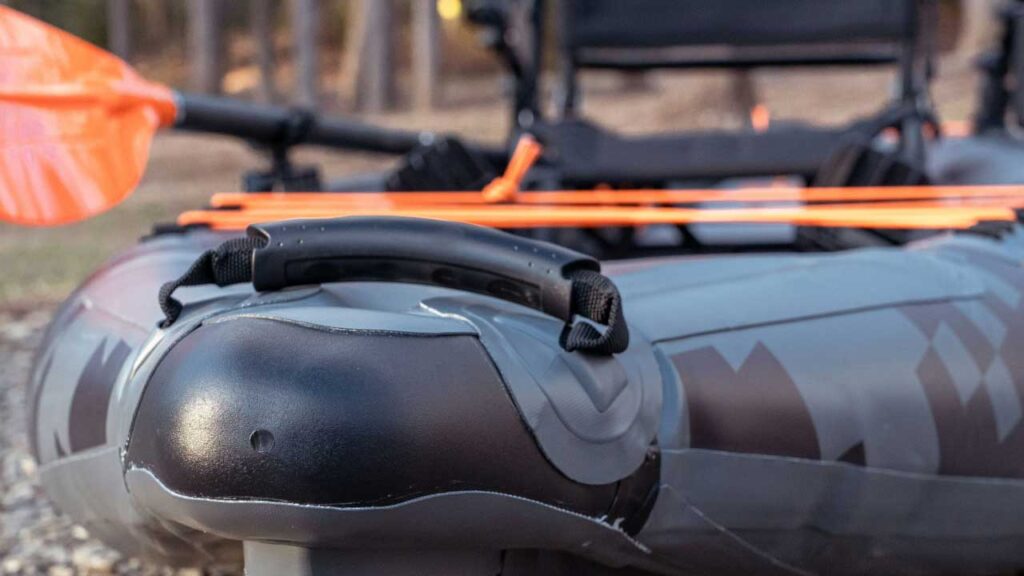
NRS makes high-quality boats that can take a lot of punishment, but hard plastic kayaks have the edge when it comes to durability. They just hold up better over time, and you can drag them over the ground or a rocky river bottom for a long time before they’ll wear out.
However, people have been running white water and fishing from inflatable boats for ages. Inflatables have gotten a lot stronger and more durable over the years. Just keep in mind that you do need to think about overinflation, air expansion, and punctures with inflatables.
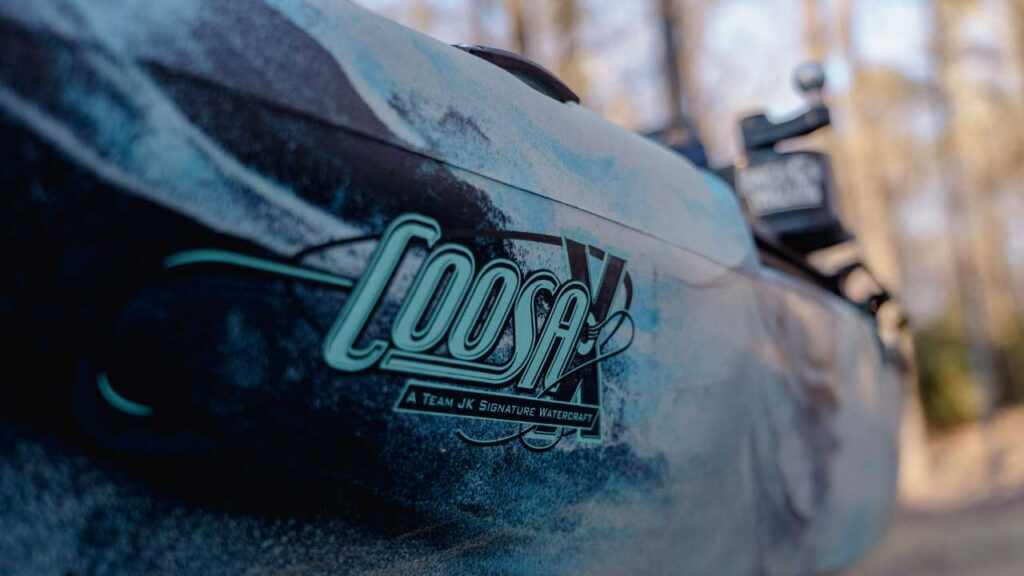
These just aren't issues with standard rotomolded fishing kayaks because they don't expand or pop. In addition, it's nice not having to worry about hooks and other sharp objects puncturing the boat and sidelining your day on the water.
Now, I don't want to give you the impression that inflatables aren’t durable. Actually, they are. It’s just that they’re less durable than hard-shell boats like the Coosa X from Jackson Kayak.
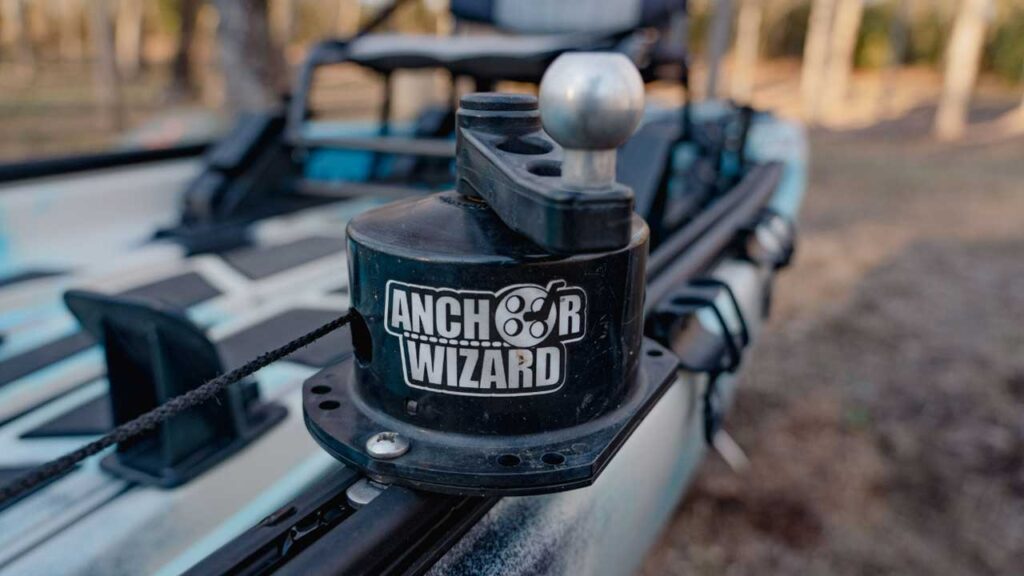
Rigging and Accessories
I really like that most fishing kayaks come with lots of gear track, but hard plastic and composite boats have the advantage in regard to rigging and accessory options.
The Coosa X comes with plenty of Jackson’s tri-track that makes it easy to put as much rigging as you want on the boat wherever you want it. You can add a lot of accessories to inflatables too, but you may have to glue on different bases.
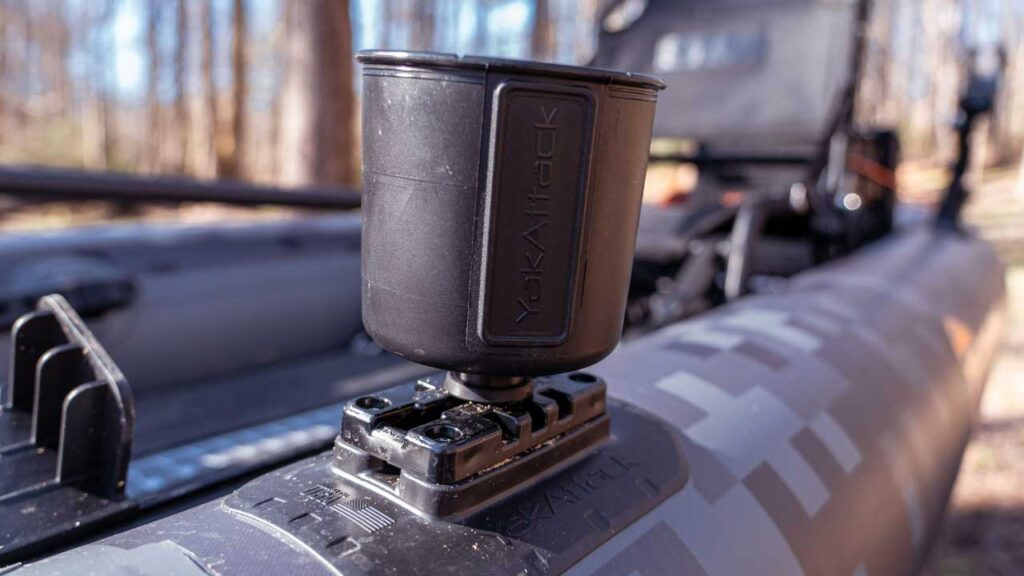
The Kuda and Pike Pro inflatable fishing kayaks from NRS do come with some bases. The only drawback is that you’re limited by the shorter track sections. Whereas some fishing kayaks have strips that are 12 inches or longer.
Both Kayak Types Offer Tons of Versatility
It's kind of a toss-up when it comes to which type of fishing kayak is more versatile.
But it's nice packing an inflatable kayak into a relatively small bag and blowing it up onsite. I also like that inflatables are light, that they're easy to store, and that they can be used on virtually any waterway.

The flip side is that rotomolded kayaks tend to give you more confidence in bigger water. This is largely because you don’t have to worry about punctures and other deflation issues. Just remember that hard kayaks aren’t impervious to problems or damage. They can still crack and wear out over time, especially when they're used a lot or abused. In fact, even leaving them out in the sun can degrade the plastic and lead to cracks and other issues.
That said, I'd say that rotomolded kayaks get the nod when it comes to overall versatility. However, it depends on your fishing style, how much you'll be traveling, how you'll transport your kayak, and how much storage space you have.
So an inflatable may be more suitable if live in an apartment, don't have a truck or trailer, or just want a lighter kayak that's easier to get to and from hard-to-reach access points.
Then again, a hard plastic boat may be a better choice if you'll be fishing tournaments in open water and want to carry lots of gear and rig-up accessories like electronics and anchor systems.
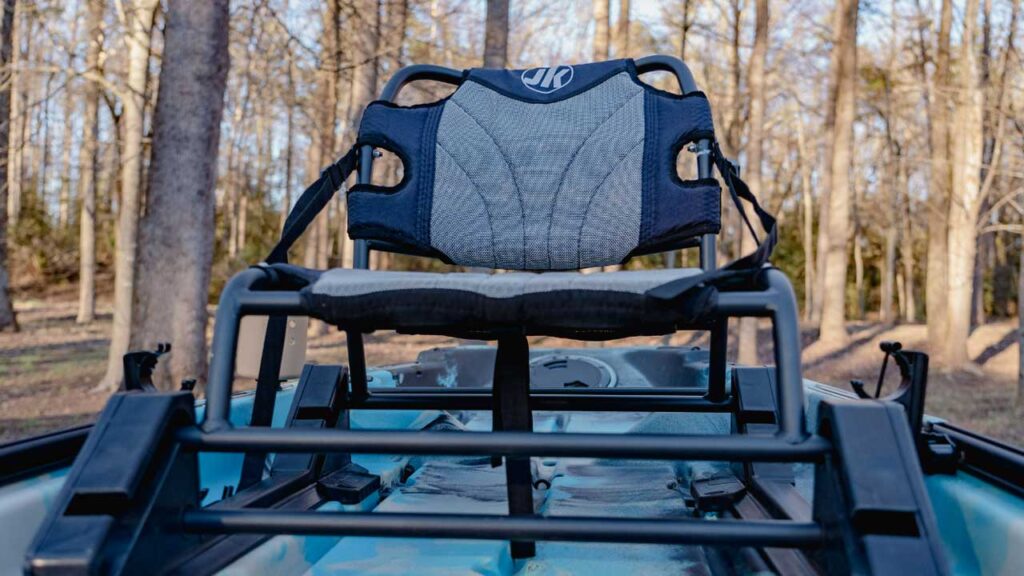
Hi-Low Versus Fixed Seating
Another advantage most rotomolded kayaks have is that they come with trimmable high-low seating.
This varies between models and manufacturers, but you rarely get high-low seating with inflatables. You may be able to move the seat forward and backward a little on some inflatable kayaks, but the seats are often locked into place.
I do want to say that NRS’s Pike Pro and Kuda 126 are some of the best inflatable fishing kayaks out there when it comes to versatile, high-quality, purpose-built fishing kayaks. And again, it really just depends on what you’re doing with the boat, where you’re using it, and how you plan on storing and transporting it.
It's also worth noting that you'll generally have access to interior storage with rotomolded sit-on-top kayaks.
More Models to Choose From With Hard Kayaks
There are a lot more options with standard rotomolded fishing kayaks than with inflatables. There really aren’t a ton of inflatable kayaks designed specifically for fishing. This limits your choices and can make it tricky to find the right kayak and get it dialed into your needs.
But to recap, I think the NRS Kuda and Pike Pro are two of the best options out there. In fact, they’ll give some rotomolded plastic kayaks a run for their money in a lot of ways.
You really just need to think about what you're doing and where you're fishing to figure out which kind of boat will work best for you.
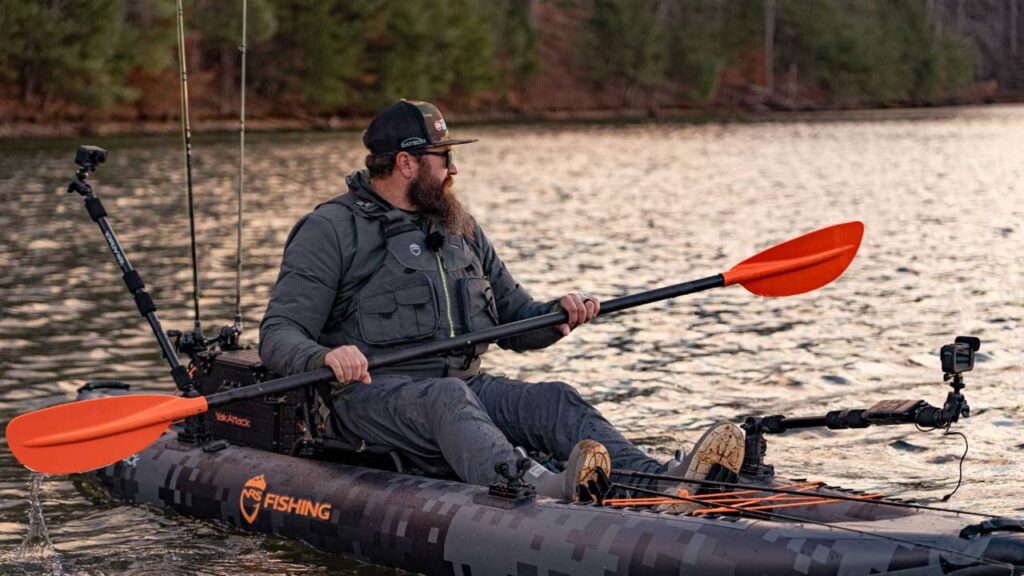
Tracking, Speed, and Maneuverability
Another thing to consider is that inflatables tend to sit more on top of the water, while hard shell kayaks sit down deeper.
This makes inflatables more nimble and easier to get up to speed more quickly. On the flip side, the wind can push them around more than hard-shell kayaks.
With that in mind, a rotomolded boat like the Jackson Kayak Coosa X may be the way to go if you primarily fish in open water exposed to the wind. If you’ll be fishing smaller creeks and rivers and need a maneuverable lightweight boat that you can get to and from the water more easily, you may want to take a serious look at an inflatable like a Pike Pro or Kuda from NRS.
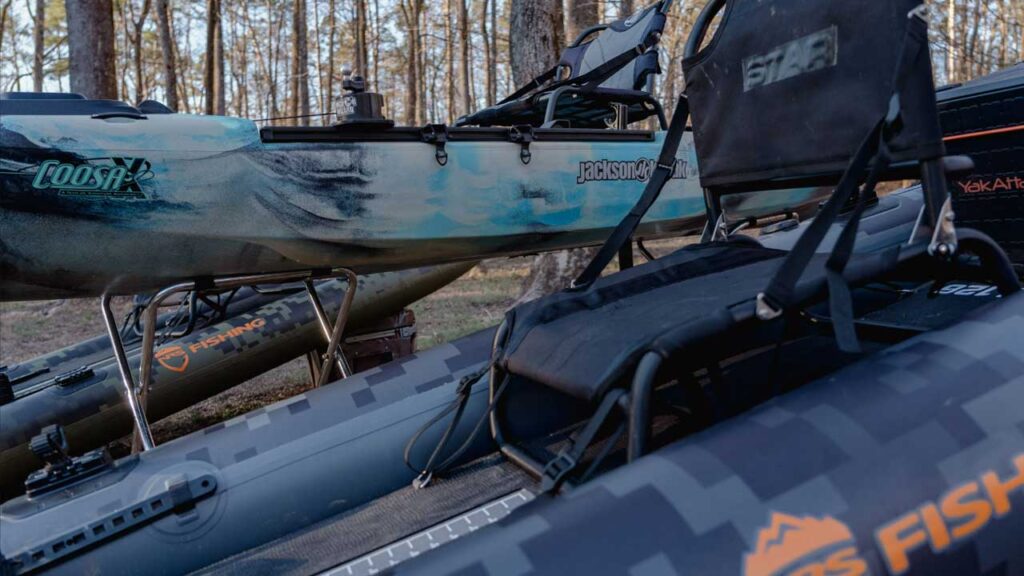
The Verdict – Rotomolded vs. Inflatable Fishing Kayaks
So what type of kayak is right for you?
That’s a hard question to answer. I have certain situations where inflatables work best and others where I prefer a rigid kayak.
It could be completely different for you. I suggest trying out both types of fishing kayaks and finding a dealer with lots of models to choose from.
Inflatables are great if you have minimal storage or just need something you can pack up and transport easily. You should definitely think about access too. Dragging a 31-pound kayak through the woods to a launch location is way easier than it is with a 100-pound kayak.
Inflatables are also an advantage when you’re attaining up a river. For river fishing, I want something that's easy to drag across shoals and sits on top of the water instead of down in the current.
Again, rotomolded kayaks usually have more gear track. So they're clear winners when it comes to rigging and adding accessories like electronics.
In summary, making the right decision boils down to the following:
- Where you'll be fishing
- How you'll move and store your kayak
- How much gear you have
- How many accessories you'll add
- Features like ho-low seating and internal storage
- The tradeoff between lightweight and long-term durability
Remember, you don’t have to settle for a kayak that isn’t right for you. These days there are plenty of options with NRS, Jackson Kayak, and other manufacturers.
As always, thanks for stopping by.

Kayaks: NRS Pike Pro, NRS Kuda 126, Jackson Coosa X
Life vest: NRS Chinook PFD
Accessories: Anchor Wizard, YakAttack Omega Rod Holder, YakAttack Cup Holder, YakAttack Rotogrip, and the YakAttack BlackPak Pro
Shirt: NRS Varial Hoodie
Rods: Judge Crankbait Series, Eternity Series, Revelation Series
Sunglasses: Wiley X
Follow my Adventures and Subscribe
If you enjoyed this article and are hungry for more adventure fishing tips, tricks, reviews, and adventures? Head on over to the Road Trip Angler YouTube channel and feel free to sign up for our In4Adventure.com newsletter.



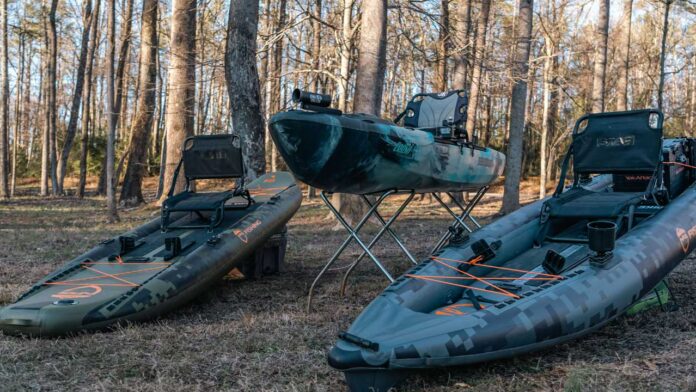
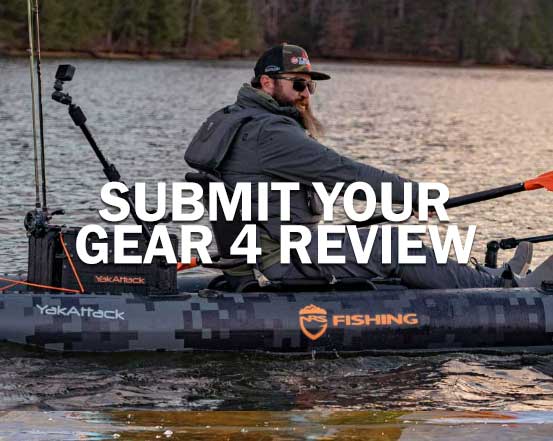









Hi mates, its enormous post on the topic of educationand fully explained, keep it
up all the time.